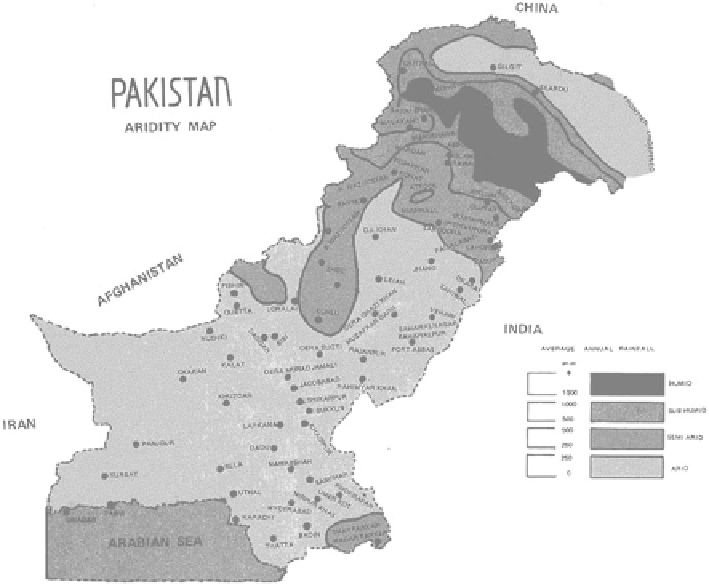Geoscience Reference
In-Depth Information
Fig. 12.1
Map of Pakistan showing distribution of rainfall. The darker areas receive higher rainfall
ties. The arid coastal strips and mangrove areas are under increased environmental
stress from reduced fresh water flows, sewage and industrial pollution and over-
exploitation of other natural resources. The rate of land degradation in the fragile
ecosystems like sandy deserts, Rod Kohi and coastal areas is accelerating, rendering
many areas unproductive and threatening the agricultural economy of the country.
Keeping in view the growing problems of desertification in Pakistan the UNCCD
Convention was signed in 1994 and ratified in 1997. Pakistan thus became a Party
to it and fulfills the obligation under UNCCD. As a result, a NAP has been prepared
with the financial and technical support of United Nations Environment Program
(UNEP) and Economic and Social Commission for Asia and Pacific (ESCAP).
Pakistan Agricultural Research Council through its Range Research Institute (RRI)
was entrusted to develop the NAP in Pakistan. A multi-disciplinary team com-
prising of experts of various relevant disciplines drafted the NAP after a series of
discussions and consultations with UNEP/ESCAP and relevant federal, provincial
agencies and NGOs. The first draft of NAP was discussed in a national workshop
organized by PARC/RRI which was attended by all relevant organizations. Rec-
ommendations of the workshop were incorporated in the draft and submitted to
the Ministry of Environment. This draft was again discussed in a national seminar

Search WWH ::

Custom Search